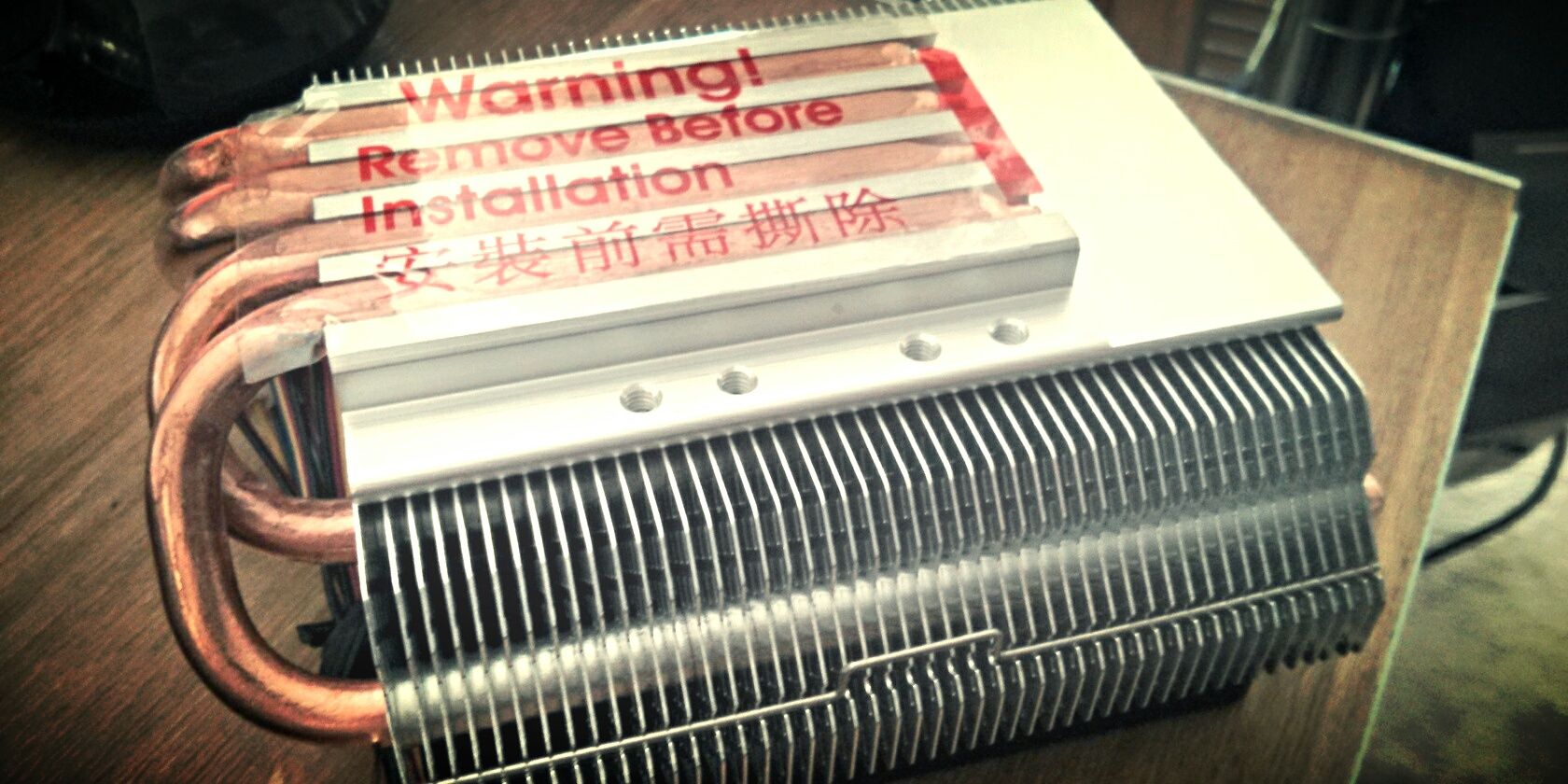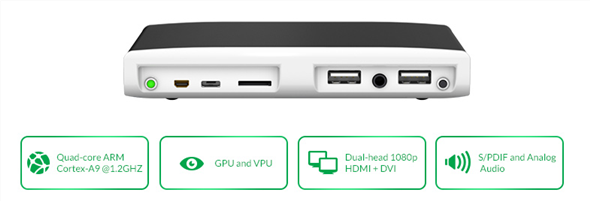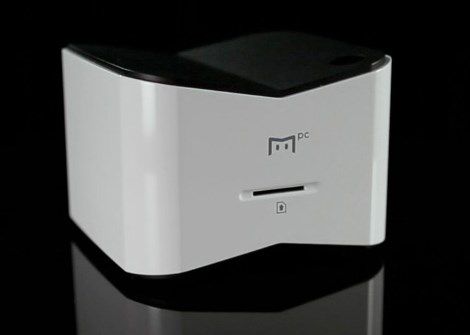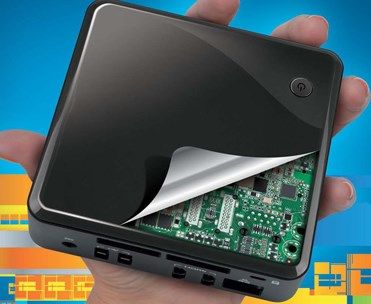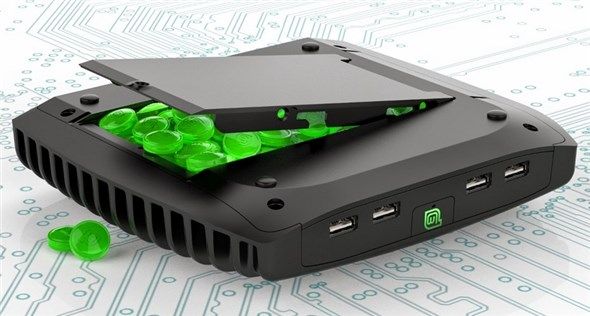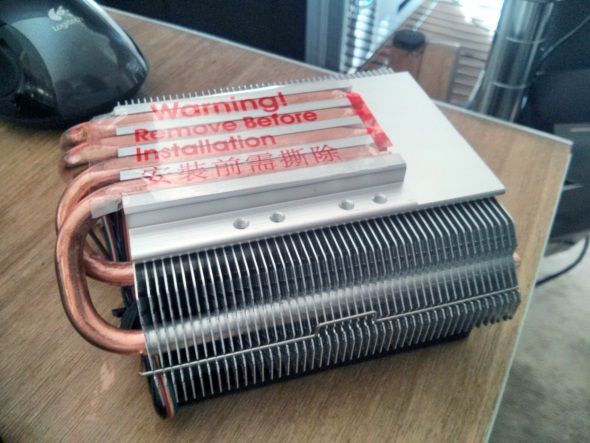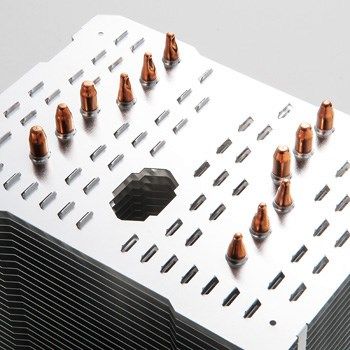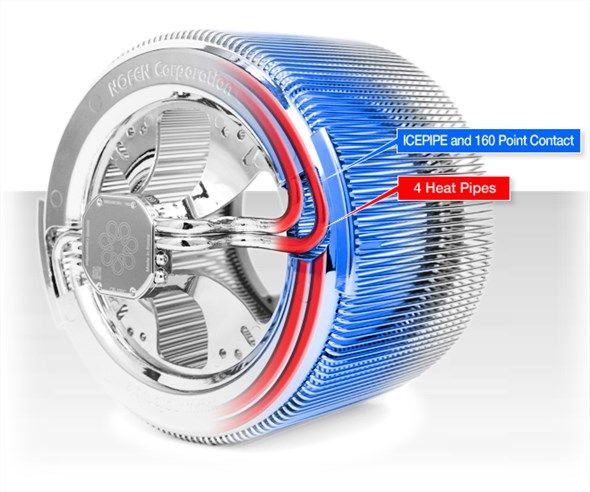Computer fans clog with dust, make horrible noises and waste energy. Why put up with that when consumers can go silent and green? A huge number of options popped up for setting up highly efficient fanless computers. Because of their ideal acoustic properties, fanless PCs make ideal home theater PCs, workstations and industrial computers.
There are effectively two kinds of fanless computer: Those powered by ARM-based chips and those with x86-based. ARM-powered CPUs generally consume less power at the expense of performance. In comparison, the x86 instruction set architecture possesses power at the expense of wattage, particularly at lower wattages. Hardware giants AMD and Intel design almost exclusively in the realm of x86. However, AMD plans on producing ARM-based processors for the server market, with the help of ARM Holdings.
This article summarizes some of the upcoming fanless desktop computing available or on the horizon. For those of you looking for passively cooled tablet technologies, check out our tablet buying guide.
ARM (Linux or Android)
ARM chips run a great deal cooler than contemporaneous devices from Intel or AMD. On the downside, ARM chips lack the performance of x86 designs. However, for the vast majority of online activity, such as web browsing, Facebook and search, ARM chips are more than enough.
Utilite: Fanless Linux Desktop
A variety of ARM-powered designs don't require fans and use extremely low wattages. In particular, the Utilite series of desktop contain Cortex-A9 CPUs in single, dual and quad-core variants. It also can do dual-gigabit LAN and supports simultaneous HDMI and DVI video output, meaning you can run two monitors off of one machine. The cheapest version of the Utilite weighs in at a mere $99 and a quad-core system will set you back $199.
MiiPC
The successful MiiPC Kickstarter campaign led to the crowdsourcing of an ARM-based, fanless family-oriented PC. The MiiPC dual boots Linux and Android, while supporting multiple user logins. Its design emphasizes low-cost and built-in content filtering, to prevent children from accessing adult-oriented sites. You can currently place a pre-order on their website.
X86 (Windows or Linux)
For x86-based operating systems, such as Windows or Linux, a huge number of fanless computer options exist. These range in price from the more expensive MintBox systems, to the inexpensive NUCs.
Intel NUC
Intel's "Next Unit of Computing" mini-computers, with an ignoble acronym, "NUC", recently rumored to possess fanless variants. While the fanless versions aren't yet available, early prototypes show a variety of passively cooled, fully-enclosed NUC PCs. It's believed that upcoming NUCs could include specs as beefy as the Core i7 in a form factor similar to a masonry brick.
For the early adopters, you can purchase fan-equipped NUCs today.
MintBox
The FitPC MintBox line of desktop computer uses AMD's APU technology combined with the Linux operating system. The MintBox comes into two different variants: The "Basic" version, which includes a dual-core 1.0 GHz APU and a solid integrated graphics processor and the "Pro" version, which uses a 1.6GHz dual-core APU with good graphics processor.
The MintBox makes an excellent light productivity station, particularly paired with such amazing, and free, software as Kingsoft's WPS word processor.
Do It Yourself Option
Did you know you can build your own fanless PC from scratch? The key is in finding the right passive heat sink. Fortunately several manufacturers specialize in fanless or fanless-optional coolers. Here's several of the best passive coolers, in both low-profile and full-sized form factors:
Low Profile (31 mm/1.5U low height)
Because desktop computers run extremely hot (wattages range from 45 to 100 watts), it takes an extremely large heat sink to cool them. If you have an extremely low wattage CPU, such as a Core i3 35-watt, smaller heat sinks can handle the cooling, in ideal conditions. Among the best passive, low-profile coolers are is the Evercool HPL-815 (a licensed, rebranded copy of Titan's TTC-NC25 heat-sink-fan combination). The HPL-815 can passively cool up to 35 watts. For the height, it ranks among the best passive coolers.
Passive Coolers Requiring Full-Sized Cases
I found two high quality passive heat-sinks for the x86 desktop market. Unlike ARM-based chips, x86's raw power requires a great deal of cooling to prevent overheating. Consequently, on higher wattage systems, heat-sinks show up in extremely large dimensions.
Thermalright Macho 120: Larger heat-sinks displace heat much better than small ones, due to having a larger surface area. The Thermalright Macho 120 remains among the best of the large, passive coolers. Rumored to handle up to 65 watts without a fan, the Macho 120's reputation looms large over smaller coolers. Some of its users successfully fitted the Macho 120to a mini-ITX case.
NoFan CR-95C and CR-100A: A South Korean corporation, NoFan, creates heat-sinks for one purpose: silence. All of their products oriented themselves toward passive operation. These rely entirely upon convection cooling for temperature control. The two best coolers, the CR-95C and CR100A, cool up to 95 and 100 watt CPUs, respectively.
On the downside, the CR series are absolutely huge. The radial shape of their cooler takes up the entirety of most full-sized ATX cases and compatibility issues may abound.
Conclusion
Fanless PCs oftentimes cost less to buy and maintain than full-sized desktops. They are far less prone to dust collection and therefore require less maintenance than full-sized machines. As HTPCs, you can find no better machine. However, they frequently fall behind traditional desktops in raw processing power.
In addition to coming in a variety of shapes and sizes, they also provide excellent operating system options, with both Windows, Android and Linux flavors. For more information on fanless technology, check out the amazing FanlessTech.com. Another great place is the XBMC forums.
If you liked this, chances are you'll love these eco-friendly products for your home office.

